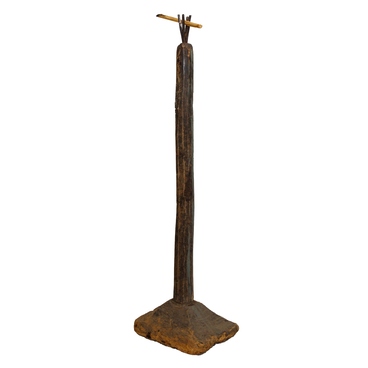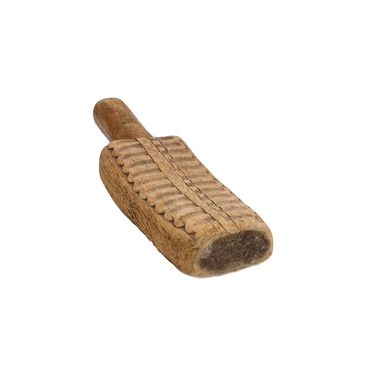The north-western group of Mordva-Moksha live in the territory of the former Krasnoslobodsky uyezd of Penza province and Temnikovsky uyezd, where the Moksha River flows. Its basin was the primary place of settlement of the Moksha tribes.
They were engaged in agriculture, cattle breeding, hunting, fishing and beekeeping. The settlements were located mainly on the banks of the river and its tributaries.
In the 12th century, Russians from the Ryazan princedom came to the territory where Mordva-Moksha people lived. The Russian population settled on treeless areas, while the Mordva, on the contrary, preferred to live in forests. The settlement of Russians on these territories was interrupted by the Mongol-Tatar invasion. The invasion resulted in the devastation of the Mordovian lands.
After the fall of the Kazan Khanate in 1552 Russians started to move into these territories again. In the 16th century a part of the Mordovian population had to move to the east, to the Temnikovsky uyezd. Due to this, historically there was a coexistence of Mordovian-Mokshan settlements with Russian and Tatar ones in the region.
This had a considerable influence on the national costume of the Mordovian-Mokshan. It was distinguished by abundance of adornments, for the creation of which coins and all sorts of tags — goroshkat — were used, which was characteristic of the Turkic peoples. In addition, trousers and waistcoats were a part of the local women’s costume, which was a part of the national Tatar dress.
The exhibition presents a female bridal costume. Its main element was a festive “ozha ki panar” — multi-layered outerwear, which included up to 7 shirts with ornate fringes, worn one on top of another. A piece of canvas, folded in half, formed the front and back of the shirt. The sides were made of two shorter pieces of canvas, which were folded lengthwise and sewn onto the central cloth below the sleeves. Such tailoring was called Mokshan. The sleeves of this shirt were longer than those of the Erzyan one and reached up to the hands. They were sewn to the central cloth and widened with triangular wedges. The triangular chest cut was rather deep. In the front there was a cut in the centre of the hem. The shirt was tied with a belt, pulled up to the knees, with small straight folds two centimeters wide at the waist and a big fall-over in the front.
The embroidery of such shirts was made with home-made woolen threads and dyed on the edge of the hem and sleeves. The oblique stitches created large basic composition elements on shoulders, at the collar and around the bottom section. They were convex and embossed. The main colour was red-brick with a splash of yellow and green.
They were engaged in agriculture, cattle breeding, hunting, fishing and beekeeping. The settlements were located mainly on the banks of the river and its tributaries.
In the 12th century, Russians from the Ryazan princedom came to the territory where Mordva-Moksha people lived. The Russian population settled on treeless areas, while the Mordva, on the contrary, preferred to live in forests. The settlement of Russians on these territories was interrupted by the Mongol-Tatar invasion. The invasion resulted in the devastation of the Mordovian lands.
After the fall of the Kazan Khanate in 1552 Russians started to move into these territories again. In the 16th century a part of the Mordovian population had to move to the east, to the Temnikovsky uyezd. Due to this, historically there was a coexistence of Mordovian-Mokshan settlements with Russian and Tatar ones in the region.
This had a considerable influence on the national costume of the Mordovian-Mokshan. It was distinguished by abundance of adornments, for the creation of which coins and all sorts of tags — goroshkat — were used, which was characteristic of the Turkic peoples. In addition, trousers and waistcoats were a part of the local women’s costume, which was a part of the national Tatar dress.
The exhibition presents a female bridal costume. Its main element was a festive “ozha ki panar” — multi-layered outerwear, which included up to 7 shirts with ornate fringes, worn one on top of another. A piece of canvas, folded in half, formed the front and back of the shirt. The sides were made of two shorter pieces of canvas, which were folded lengthwise and sewn onto the central cloth below the sleeves. Such tailoring was called Mokshan. The sleeves of this shirt were longer than those of the Erzyan one and reached up to the hands. They were sewn to the central cloth and widened with triangular wedges. The triangular chest cut was rather deep. In the front there was a cut in the centre of the hem. The shirt was tied with a belt, pulled up to the knees, with small straight folds two centimeters wide at the waist and a big fall-over in the front.
The embroidery of such shirts was made with home-made woolen threads and dyed on the edge of the hem and sleeves. The oblique stitches created large basic composition elements on shoulders, at the collar and around the bottom section. They were convex and embossed. The main colour was red-brick with a splash of yellow and green.



